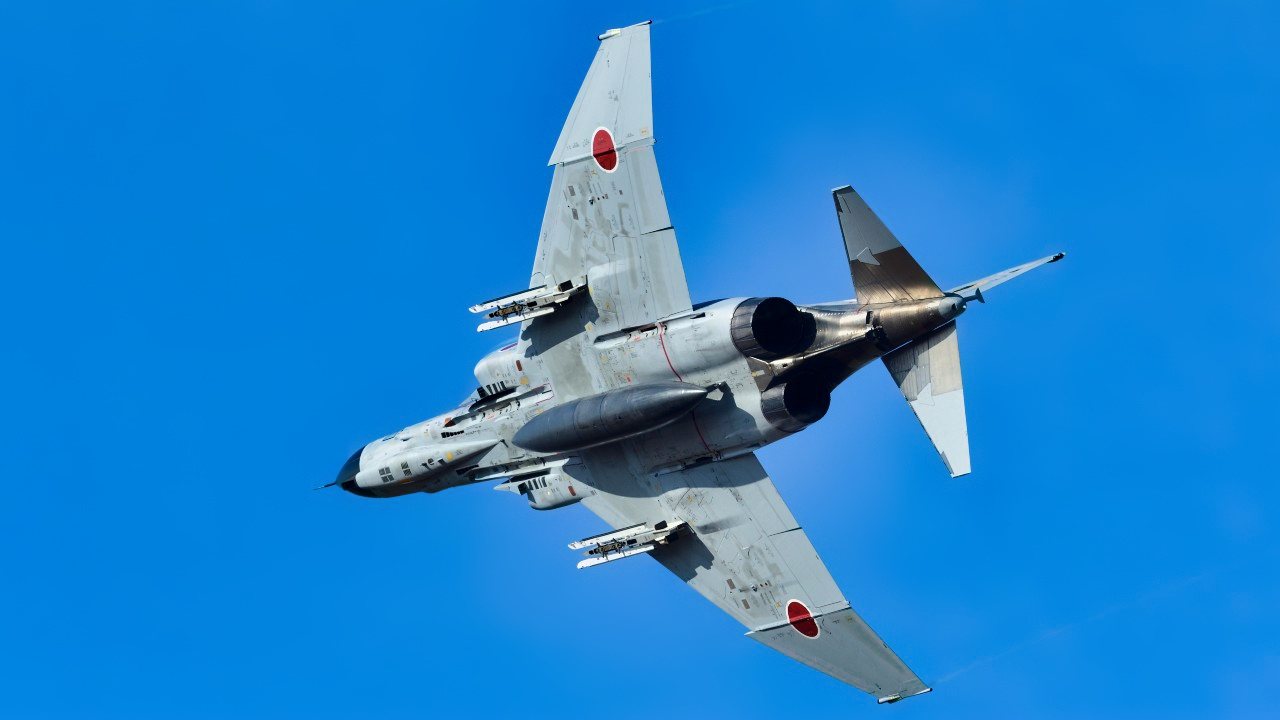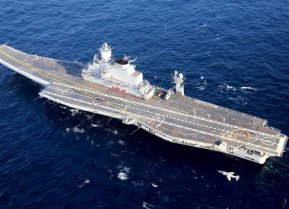F-4 Phantom: The Supersonic Brick Fighter Was A True Game Changer
The F-4 was retired from U.S. Air Force service in 1996, but many Phantom IIs of numerous variants are displayed in museums worldwide. Incredibly, the venerable warbird still remains in service with the Iranian Air Force to this very day.
A former U.S. Air Force officer gives us his expert analysis of the F-4 Phantom: After having made references to the F-4 Phantom in so many of my articles on other fighter planes, including the MiG-25 Foxbat and the F-105 Thunderchief, I reckon it's way past time I did a piece on the famous Phantom herself.
Let's start with a song by former Vietnam War pilot Dick Jonas (Lt. Col, USAF, Ret.) turned "fighter pilot's minstrel." Dick flew many a mission in the F-4 as a member of the 433rd Tactical Fighter Squadron (TFS) AKA "Satan's Angels" out of the 8th Tactical Fighter Wing (TFW) AKA "Wolf Pack" in Ubon, Thailand, commanded by Col. Willam "Hoot" Gibson:
"Well I'm a Son of Satan's Angels/And I fly the F-4D/All the way from the Hanoi railroad bridge to the DMZ/I'm one of ol' Hoot Gibson's boys, as mean as I could be/I'm a Son of Satan's Angels and I fly the F-4D…"
Now let's take a deeper dive into what made the Phantom such a ballad-worthy jet fighter.
F-4: The Supersonic Brick Takes Flight
The plane was officially known as the McDonnell Douglas F-4 Phantom II. Moniker-wise it was the "sequel" (so to speak) to the original Phantom, that being the short-lived 1940s vintage FH Phantom, which made history in its own right during its brief service life as both the first U.S. jet aircraft to take off from and land on an aircraft carrier, and subsequently it became the first U.S. jet fighter in operational service with both the Navy and Marine Corps.
First conceptualized in the mid-1950s to meet the Navy's need for an all-weather fleet defense interceptor, the Phantom II made her maiden flight on 27 May 1958 and was officially adopted by the Navy in 1961, with the Air Force and Marine Corps following suit shortly thereafter.
The F-4 made quite an impression in a short space of time, setting 16 (that's right, sixteen) world speed and altitude records between 1959 and 1962. Five of those records would stand until the F-15 Eagle—another McDonnell Douglas product—came along in 1975.
The Phantom Redux's (yes, I just made that phrase up on the spot) top speed of Mach 2.23 (1,711 mph/2,753 kmh) is even more impressive in light of the huge size of the warbird: a max takeoff weight of 60,000 pounds (27, 215 kilograms), a length of 63 feet (19.2 meters), a wingspan of 37 feet 5 inches (11.7 meters), and a height of 16 feet 5 inches (5 meters). This combo of high speed and large measurements prompted Vietnam veteran pilot Dick Anderegg to joke that this big bird provided “proof that if you put enough thrust behind a brick you can make it fly.”
Of course, the Phantom II wasn't born to race, but rather to fight, and with the specter of Vietnam looming just around the corner from her official adoption by the U.S. Armed Forces, she'd soon see more than her fair share of combat action, and then some.
"Hello Hanoi Hannah, Send Your MiGs to Meet Their Doom…"
'Twas indeed the F-4—specifically the F-4C variant—that nabbed USAF's first kills of the war, which occurred on July 7, 1965, whereupon a pair of Phantoms bagged two MiG-17 "Frescoes." However, in spite of the F-4's impressive speed and power, its pilots initially had considerable difficulty against North Vietnam's slower but more maneuverable MiG-17s and MiG-21 "Fishbeds." Besides the maneuverability deficiency, the USN, USAF, and USMC Phantom drivers alike were initially placed at disadvantage due to the lack of a gun in early models, not to mention the extremely restricted rules of engagement (ROEs) imposed by then-President LBJ and then-SECDEF Robert S. McNamara. At one point, the Americans' air-to-air kill ratio against their Communist adversaries dropped to a paltry 2:1.
However, an improvement in aviator training & tactics, the addition of the cannon, and (presumably) the relaxation of ROE restrictions by LBJ's successor "Tricky Dick" Nixon, eventually helped turn the tide of the air war in favor of the Phantoms. USAF F-4 MiG Combat Air Patrol (MiGCAP) missions ended up with a far more desirable 5.5:1 kill ratio while their USN counterparts finished with an even more impressive 6.4:1 figure.
The most famous MiG-killing Phantom driver of them all was the late great USAF Brig. Gen. Robin Olds—who already had 12 aerial victories carrying over from his WWII service—who shot down four MiGs and thus upgraded his status from "double ace" to "triple ace" with a final score of 16 kills. One of those MiG kills occurred during Operation Bolo, which was arguably Robin's most impressive feat as a senior officer. On New Year's Day 1967, then-Col. Olds and his "Wolfpack" pulled off one of the all-time greatest ruses of aerial warfare, impersonating a formation of F-105s on a bombing mission, and when the MiG-21s took the bed, the Phantom drivers pounced. Seven "Fishbeds" were downed in exchange for nary a single Phantom lost.
Israeli and Iranian Phantoms Haunt their Arab Aerial Adversaries
The Phantom would continue to distinguish itself in combat, this time in the hands of the Israeli Air Force, who nicknamed their F-4s the Kurnass ("Sledge Hammer"). Over the course of multiple Arab-Israeli conflicts, including the Six Day War, Yom Kippur War, and the War of Attrition, Israeli fighter pilots would use their "Sledge Hammers" to smash 116.5 enemy aircraft out of the sky. Fast-forward to the Iran-Iraq War of 1981-1988, and Iranian F-4 pilots shot down 80 of their Iraqi adversaries.

Wild Weasel: Last Hurrah of the F-4
Speaking of Iraq, it was against that same regime of Saddam Hussein's that the F-4 would see its last hurrah as a combat aircraft. In one of the most hair-raising missions of the air campaign phase 1991's Operation Desert Storm, the F-4G variant of the Phantom was tasked with "Wild Weasel" duty, i.e. suppression of enemy air defenses (SEAD) against Saddam's bristling network of SAMs and supporting radar systems. As noted by the late great aviation historian Robert F. Dorr:
"F-4G Advanced Wild Weasels flew many hundreds of other combat missions without suffering losses – taking out 74 percent of the enemy missile radars destroyed during the war. Just one F-4G Phantom was lost."

The F-4 was retired from U.S. Air Force service in 1996, but many Phantom IIs of numerous variants are displayed in museums worldwide. Incredibly, the venerable warbird still remains in service with the Iranian Air Force to this very day.
About the Author
Christian D. Orr is a former Air Force officer, Federal law enforcement officer, and private military contractor (with assignments worked in Iraq, the United Arab Emirates, Kosovo, Japan, Germany, and the Pentagon). Chris holds a B.A. in International Relations from the University of Southern California (USC) and an M.A. in Intelligence Studies (concentration in Terrorism Studies) from American Military University (AMU). He has also been published in The Daily Torch and The Journal of Intelligence and Cyber Security. Last but not least, he is a Companion of the Order of the Naval Order of the United States (NOUS).


